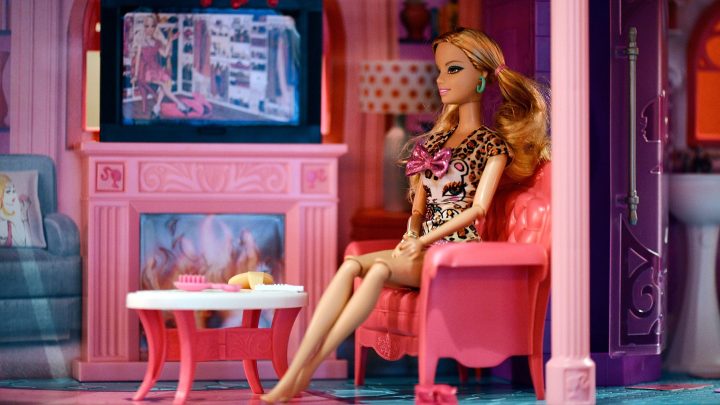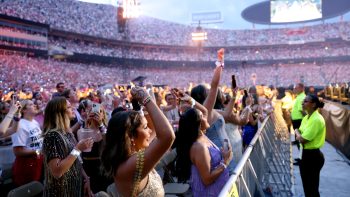
Barbie’s Dreamhouse paints a picture of America’s housing history
Barbie’s Dreamhouse paints a picture of America’s housing history

Compared to a year ago, new home sales rose by 20% in May. So, despite rates staying high, people are ready to buy. But you know who doesn’t have to deal with rate hikes and a volatile housing market?
Barbara Millicent Roberts, a.k.a. Barbie.
According to Mattel, the brand behind Barbie, a new Barbie Dreamhouse is sold every two minutes. It’s such an iconic style that, ahead of the new Barbie movie, Airbnb is renting out a Malibu mansion styled after the quintessential Dreamhouse — pink and all.
Anna Kodé is a real estate reporter with the New York Times. She went to Mattel to revisit the Barbie Dreamhouses of old. She joined Marketplace’s Kai Ryssdal to talk about the experience and what the evolution of the toy can tell us about our housing history and trends. The following is an edited transcript of their conversation.
Kai Ryssdal: Real estate reporter though you are, how did you come to do a story on the Barbie Dreamhouse?
Anna Kodé: Before I was a real estate reporter, I was a styles reporter. So I’m kind of wired to think about the real estate angle of whatever is happening in pop culture. And when it comes to Barbie, of course, the answer to that is the Dreamhouse.
Ryssdal: Yeah. And it kind of doesn’t get any better than this, right? Style and real estate merging in the Barbie Dreamhouse.
Kodé: Yeah, it’s a dream come true.
Ryssdal: No pun intended. So here’s the thing, though, and obviously, we’ll talk about the house and the piece because it’s totally interesting. But you know, we as a society have put Barbie through our own psychological lenses for, like, what, 60-something years now that she’s been around? But not so much the house.

Kodé: Exactly. And that was kind of the premise of this story to give that same lens of deep critical thinking to what the Dreamhouse represents, as well. And there was a lot to unpack there from design trends to how it reflected whatever was going in society, or whatever it chose to ignore, as well, said something about it, too.
Ryssdal: Well, so let’s get to the first one right comes out in 1962. Describe it for me.
Kodé: So, the 1962 Dreamhouse is a single-room, yellow-walled ranch home and it looks like a studio apartment. It’s really quite quaint if you look at it today, but it’s probably what you would think of when you think of your first apartment out of college or something in the big city. And, to me, the most fascinating part of it is that it has no kitchen, and a lot of dollhouses at the time were made with the purpose of teaching young girls domestic tasks like cooking and cleaning, and all of that. But here, this was just about Barbie having fun in her own home.
Ryssdal: We should point out here, the idea in 1962 of a woman, or a minority for that matter, just to take it a little bit afield, having access to the credit needed to buy a home was not entirely reality-based.
Kodé: Right. The Equal Credit Opportunity Act wasn’t passed until 1974. So in 1962, it was really common for a bank to turn down a mortgage for a woman just because she was a woman or because she was single or divorced. So this toy represented something that young girls didn’t really see in the real world very often.
Ryssdal: The next one you come to is the 1979 version. By this time, Barbie is in the suburbs, right? But she’s still a single woman owning a house. And Ken, as you point out in this piece, Ken is not on the deed anywhere.
Kodé: No, it’s still Barbie’s house and they’re getting bigger and more glamorous. The 1990 house in particular looks so much like a McMansion. It has these huge columns, these big double doors, and that’s the era when Americans are really obsessed with houses being bigger and more showy and flashy and everything.
Ryssdal: We should point out here that this, first of all, it’s a toy, right? So it’s not supposed to be reality-based, but it’s not reality-based in terms of what’s going on with housing reality at times. In 2008, right, we have the housing crash. Mattel sort of doesn’t, you know, acknowledge the reality of that.
Kodé: I mean, who wants their toy to represent the housing crisis? It’s kind of a nice counter to that. But they do acknowledge other things like they acknowledged the pandemic in 2021 you have Barbie having her own work-from-home station in the house.
Ryssdal: Yeah, no, I loved that. That was great, up on the tiny bedroom on the third floor, just doing her thing. So what do you make of this? I mean, look, you’re an experienced real estate reporter, and you’re a style reporter. What’s your takeaway?
Kodé: Oh, my gosh, there’s a lot to take away from here. But when a toy lasts for 60 years, it can really show you so much of how things have changed over time. On one side, you can look for design trends, right? But if you take a look deeper, you can really see policy or inequality reflected in the toy, too. And I think this could probably be extended to almost any object and see how it reflected the times over any number of years.
Ryssdal: OK, so, look, are you going to see the movie, or what?
Kodé: I guess so. I’m a little Barbied out for now, but I don’t know if I can avoid it.
There’s a lot happening in the world. Through it all, Marketplace is here for you.
You rely on Marketplace to break down the world’s events and tell you how it affects you in a fact-based, approachable way. We rely on your financial support to keep making that possible.
Your donation today powers the independent journalism that you rely on. For just $5/month, you can help sustain Marketplace so we can keep reporting on the things that matter to you.

















